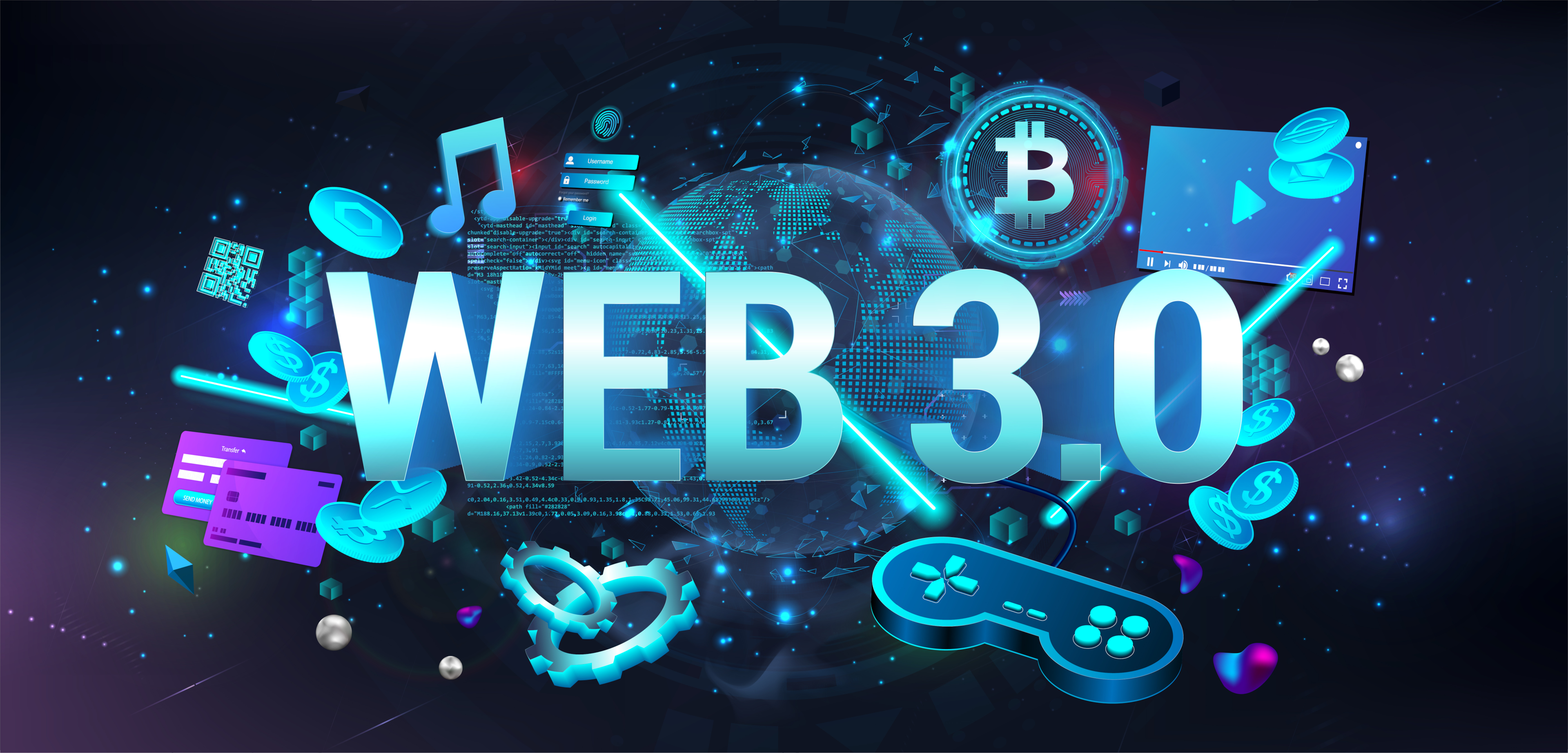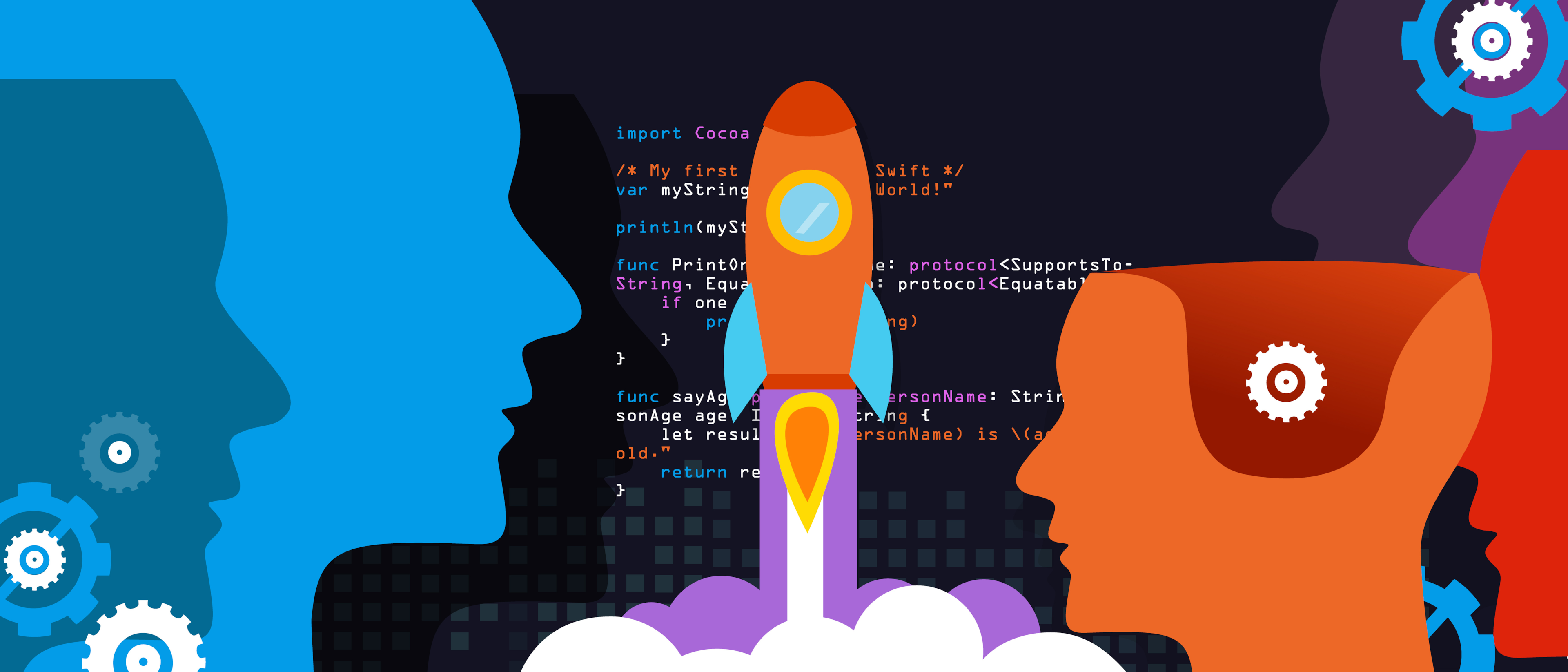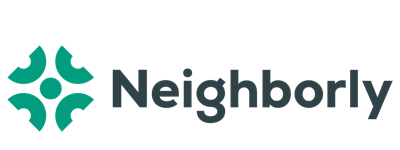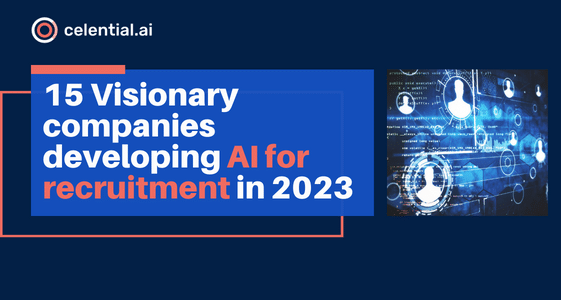Web3 — the decentralized, blockchain-based vision of a future internet — is one of the few industries still skyrocketing into 2023, with the number of people working in the space climbing 86% year-over-year in the United States.

Blockchain was invented in 2008. Its users have since grown from a small group of enthusiasts to a growing industry with hundreds of billions of dollars in impact.
The shortage of experienced Web3 developers, as well as the newness of the field and jobs available, means that traditional strategies for and norms around talent acquisition are rapidly changing — and blockchain companies need to be careful whom they end up hiring.

That’s why we wrote this guide for Web3 companies and other startups who are currently looking to hire web3 developers. We’ll cover the challenges and pitfalls of Web3 hiring, solutions, tips, interview questions, role breakdowns, and job ad templates.
If you are currently sourcing for a Web3 role, save yourself some time and speak to one of our technical recruiting specialists here.
See how you can start receiving full-vetted candidates in as little as 3-days.
What is Web3?
Web3 is considered to be the next iteration of the World Wide Web. Unlike Web 1.0 and Web 2.0, Web3 is based on decentralization, blockchain tech, and token-based economics.
While Web 2.0 is user-centric and driven by user-created content — think Twitter, Instagram, YouTube, and TikTok — Web3 intends to introduce more autonomy, privacy, data security, and leverage blockchain to achieve freedom from censorship and centralized control.

This is accomplished by the creation of decentralized web applications (Dapps) and smart contracts that aren’t hosted by a single server or entity but are instead distributed on a blockchain or decentralized peer-to-peer (P2P) network such as Ethereum or Solana, as well as the use of cryptocurrency controlled by users rather than authorities like governments or corporations.
What is a Web3 developer?
Web3 Developers are software developers who design, build, maintain, and/or test web applications and systems built on distributed networks such as blockchain.
Challenges of hiring Web3 Developers
If hiring a traditional developer wasn’t hard enough, Web3 adds many challenges to the mix. Besides the fact that there simply aren’t enough experienced blockchain developers to meet demand, those are:
1. The speed of Web3 innovation.
Compared to more established industries, blockchain companies are often organized in an ad hoc manner, so they lack clearly defined organized processes and infrastructure. Most Web3 organizations also don’t have Human Resources or Talent Acquisition functions.

To make matters even more complicated, a lot of received wisdom about how recruiting is done is based on Web2 expectations and norms, which may not hold true for Web3.
For example, where to find suitable candidates, how to convince them to join your startup, how to compensate them, and how to manage them, are all questions that need to be reworked when building a new kind of organization that has not widely existed before.
Newly established Web3 organizations are also typically behind on employer branding, making it difficult to advertise and sell your organization to potential employees.
Besides the difficulties on the employer side, the speed of change and innovation also means that blockchain companies typically need to hire a particular kind of person: self-starters and self-educators.

The pace of technological change is accelerating so quickly that knowledge can become obsolete in 3-6 months — and lean blockchain organizations don’t have the time and bandwidth to hold employees’ hands.
2. The difficulty of compensating Web3 developers
The first challenge is that a labor shortage drives up the cost of hiring a blockchain developer.
Another challenge is that many blockchain companies offer compensation at least partially in cryptocurrency, the value of which can fluctuate wildly. Though it can be an advantage in recruiting some developers, others may not feel comfortable with crypto compensation.

This is particularly difficult in a year that has been rough for crypto — with a 2022 price collapse and the recent announcement of the implosion of FTX, one of the biggest and most powerful crypto exchanges. Others may work in countries that ban crypto.
To persuade developers to join, Web3 companies often need to get creative with benefits like unlimited vacation and flexible working hours.
3. Difficulty in vetting
Blockchain culture prioritizes privacy, anonymity, and the rejection of traditional norms such as a 9-to-5 in-person schedule.

While these benefits are sought after by many Web3 developers, there are significant pitfalls for employers who can’t vet candidates as thoroughly as traditional Web2 employers. Those include:
The difficulty of weeding out bad actors.
Some candidates may be motivated to misrepresent or exaggerate their blockchain skills, given high blockchain salaries.

It may take several weeks to discover that a candidate is not who they say they are, meaning considerable wasted time and cost for employers who need to restart the hiring process again.
Remote, flexible hours make moonlighting a temptation.
While most employers aren’t okay with their highly-paid full-time employees working multiple jobs, Web3 norms make it tempting and easy (at least for a time) to string along multiple employers.
The wrong hire can take down a Web3 company or project.
Unfortunately, many hacks are perpetrated by employees with inside information and access to a project. And if blockchain companies fail to do due diligence and collect identifying information on employees during the hiring process, pursuing legal action can be difficult.

4. Traditional methods don’t work well to hire web3 developers
Many blockchain startups find that traditional methods of finding candidates through career and job sites and paid ads don’t work — particularly when it comes to hiring experienced senior blockchain developers.
Web3 organizations can’t rely on active candidates coming to them — they have to be creative with methods such as referrals, working with web3 contract recruiters, participating in blockchain communities and events, and searching through social media sites such as Twitter.

Other blockchain companies wishing to hire Web3 developers have found success hiring through methods such as organic search — reaching Web3 developers by creating content that will appeal to them or educate them, such as a tutorial on a Web3 skill or technology or an article on the state of blockchain in 2023.
5. Globally distributed teams.
While hiring globally has the advantage of significantly widening your talent pool, it also comes with some challenges. It can be challenging to figure out taxes and benefits across multiple countries, for example.
While remote work is appealing to many blockchain developers, collaborating when everyone is on a different schedule, may have varying proficiency levels in the same language, and differ culturally, can make everything more complicated.
Solution: Know how to Hire Web3 Developers
Our practical guide to technical recruiting for today’s Web3 hiring market will cover a short glossary of jobs and skills, how to put together an appealing job description, and the questions you need to ask while evaluating a potential hire.

Step One: Understand Web3 Developers’ skills: Smart Contracts, Dapps, and more
As blockchain is an emerging field in real-time evolution, the various roles and specializations aren’t always easy to tell apart. Here are the most common Web3 developer jobs as they currently stand in 2022.
Core blockchain developer
Core blockchain developers create the underlying architecture of the blockchain system and its protocols. They create the foundation used by Decentralized web app (Dapp) and smart contract developers to build apps that run on blockchain technology.
Front end (Dapp) developer
A front end developer works on the part of the Dapp that you can see and interact with, the user interface (UI). Some common front end skills include HTML, CSS, JavaScript, React, and Angular.

Back end (Dapp) developer
A back end developer works on the part of the app that allows the front end to function, i.e. the “server-side” instead of the “client-side”. Some keywords and skills associated with back end developers are infrastructure, API, Django, Flask, Rails, and Spring.
Full stack (Dapp) developer
A full stack developer works on both the front end and back end of an app and will have a mix of both front end and back end skills and project experience. Full stack developers are often highly in demand for their versatility.
It’s rare for a full stack developer to be truly full stack — most lean a little towards the front end or the back end.
Some programming languages full stack developers use (which may also be used by front end and back end developers) include Python, Java, Ruby, Node, Go, C++, C#, and PHP.
Smart Contract developer
A smart contract developer creates smart contracts or code that runs on the blockchain to automate the execution of actions once a set of conditions has been met.
Smart contracts facilitate the exchange of currency, property, or anything else of value in a transparent and immutable way. Smart contracts reduce the need for trusted intermediators and arbitration costs, and can help prevent fraud losses.
Some examples of smart contract skills include Solidity, Chainlink, Remix, and OpenZeppelin.
Data Scientist
With data being the foundation of Artificial Intelligence (AI), Machine Learning (ML), and other blockchain technologies, data science jobs are projected to skyrocket over the next few years.
Your standard Data Scientist is part Mathematician, part Statistician, and part Software, Engineer. Their job is to take vast amounts of noisy data, both structured and unstructured, and build models to extract patterns, insights, and meaningful conclusions.

Many Data Scientists have knowledge in Python, R, SAS, Stata, and databases such as SQL, MySql, PostgreSQL, NoSQL, MongoDB, CouchDB, and Redis.
Data Engineer
Data Engineers build the infrastructure necessary to process and access data. They create virtual “pipelines” between data systems which allow Data Scientists and developers to access this data for analytical or operational purposes.
Some Data Engineering tools include Hadoop, Spark, Storm, Hive, and Flink.
Machine Learning Engineer
These professionals focus on building and producing AI and ML models that “learn”, or leverage data to improve performance over time. Machine Learning Engineers build not just the models, but the underlying systems and infrastructure for these models.
Common ML engineering skills include NumPy, SciPy, Pytorch, Scikit-learn, TensorFlow, Keras, and Pandas.
DevOps Engineer
DevOps engineers are responsible for both the development (coding and building) and operating (testing and maintaining) of decentralized apps. Skills include Ansible, Chef, Docker, Kubernetes, Jenkins, Puppet, Salt, and Terraform.
For more keywords and skills associated with various types of software development jobs, you can check out our cheat sheet for technical recruiting and glossary of blockchain and smart contract skills.
Step Two: Use a Job description template to hire Web3 developers
The key to a great job ad is keeping your audience in mind. It’s helpful to think of an ad not so much as an advertisement for your company, but rather a focused pitch designed to catch a candidate’s attention and highlight what they might find appealing about a role.
Here’s our template that you can fill in with the details of your own jobs.

[Who we are — Company Pitch]
Blocksys is one of the biggest players in Web3 social networking. We’re accelerating the decentralized future and restoring power to individuals by building a community for cryptocurrency, blockchain, smart contracts, and metaverse projects. We’re pushing the boundaries of what’s possible at the bleeding edge of blockchain technology.
[About You — Role Pitch]
We’re looking for proactive self-starter developers who desire a high-impact, high-visibility role and possess the experience to contribute to new and existing blockchain and smart contract products immediately. The role requires knowledge of Solidity, Node.js and React, as well as experience in Smart Contract Development and a deep understanding of the Ethereum Virtual Machine and other open-source technologies. This is a completely remote position that can be done from anywhere in the world.
[What you’ll help us build — Opportunity Pitch]
As Staff Blockchain Developer, you’ll:
Leverage your skills to grow as a developer and thought leader by executing complex development roadmaps from inception to deployment.
Architect and build completely new Web3 products on Ethereum
Lead sprint planning and standups to discuss priorities and manage issues
Advocate for improvements and new features based on user and stakeholder feedback
Have unlimited opportunities for shaping the culture of our engineering department and establishing best practices teamwide
[Requirements of the role]
8+ years of general software development experience
1-3 years of experience developing original smart contracts with Solidity
1-3 years of experience with Hardhat, Truffle, Brownie or a comparable framework
1-3 years of experience in a leadership role and strong communication skills
[Bonus qualifications]
Experience with Ganache, Truffle, Ethers, OpenZeppelin, Hardhat, Solidity
Previous experience with Docker, Kubenetes, and DevOps best practices
Previous experience successfully scaling a startup
Previous experience on fully remote, distributed teams
[More about us]
Blocksys raised $50 million led by Blockchain Ventures, Coinbase Ventures, and AU21 Capital and has brought 15+ disruptive Web3 products to market.
Blocksys maintains a 5-star Glassdoor rating
Blocksys was named one of the Forbes 100 Blockchain Startups to Watch in 2022
Step Three: Know what questions to Ask Web3 developers for hire
Asking some questions about Web3 fundamentals can help you quickly weed out scammers.
Generally speaking, these questions should require prior knowledge of blockchain and Web3 technical terminology, but be open-ended enough to give you a good idea of how a candidate thinks and communicates.

Don’t be afraid to ask a few softballs — you can do a deeper dive into a candidates’ technical skills with a technical screen later. This stage is for testing whether a candidate can break down concepts clearly and concisely. As the majority of Web3 and blockchain startups are fully remote, with globally distributed teams, clear written and oral communication skills are key.
Here are some questions you might consider:
#1: What are the differences between web 1.0, web 2.0, and web 3.0?
Web 1.0 – In the 1990s, the Web contained limited information and static content. Most users were passive consumers of information (such as an article or personal web page), as user interaction and search capabilities were fairly limited.
Web 2.0 – Advancements in web technologies such as HTML, CSS and JavaScript allowed the web to become significantly more interactive. Web2 also emphasizes user-generated content such as through social media.

Web 3.0 is the predicted next step in the evolution of the Internet, to become more decentralized and make use of new technologies such as blockchain to give users more control over their data and reduce the authority of organizations such as governments to censor and exert control.
#2: What is a fungible, versus non-fungible token?
Fungible items are able to be exchanged with each other. For example, dollars and cryptocurrency are fungible. On the other hand, houses are nonfungible because no two are exactly equivalent (each has a different location, time of building, and other quirks).
Tokens are digital objects that are built on top of a blockchain. A fungible token is identical to and can be exchanged with any other fungible token of the same type. On the other hand, non-fungible tokens (NFTs) are unique digital assets that cannot be replicated or substituted. These NFTs can be minted, stored, and traded at NFT marketplaces.
#3: How are Bitcoin and Ethereum different?
Bitcoin and Ethereum are the most popular cryptocurrencies, but they have significant differences, such as:
- Bitcoin was one of the earliest cryptocurrencies launched, in 2009.
- Bitcoin was designed as primarily an alternative digital payment / monetary system, whereas Ethereum is also a platform for smart contracts and decentralized applications (Dapps)
- Bitcoin uses Proof-of-Work consensus, and Ethereum 2.0 employs Proof-of-Stake
- Block time is minutes for Bitcoin, and seconds for Ethereum
#4: How is a distributed ledger different from a traditional ledger?
A traditional ledger, which has existed for hundreds of years, is a document that tracks and categorizes debits and credits. On the other hand, a distributed ledger runs on new blockchain technology. Here are some of the differences.
- A distributed ledger is shared among participants, making it highly transparent; whereas in a traditional ledger, a single copy is maintained.
- A distributed ledger has no centralized authority; all participants have the authority and ability to validate transactions
- Blockchain-distributed ledgers are irreversible, while information registered in a traditional ledger is reversible.
- A distributed ledger is secured by cryptography, hashing, and recording every transaction
#5: What is a DAO?
A DAO, or Decentralized Autonomous Organization, is a governance structure without a central authority. Changes in the rules are determined by vote, with voting power distributed to members in accordance with their stake. As a member with a large stake will not want to jeopardize the value of their holding, the structure incentivizes members to act in good faith.
#6: How do Proof of Work and Proof of Stake differ?
Proof of Work and Proof of State are cryptocurrency consensus mechanisms. For Proof of Work, the first miner to find the solution to a complex mathematical problem advertises it to the network and receives a reward in cryptocurrency. However, it is computational-power-heavy.

On the other hand, for Proof of Stake, a consensus algorithm decides who will validate the next block, with probability depending on the number of coins they already hold.
#7: What are blockchain attacks, and can you give me an example?
Hackers have often tried to steal cryptocurrency by exploiting vulnerabilities in code. Here are a few common examples.
In a 51% attack, when an individual or group controls a majority of the nodes, they are able to gain control over the entire network. Malicious actors can then tamper with smart contract transaction verification and double-spend their assets.
A reentrancy attack exploits vulnerabilities in smart contracts. It occurs when a function makes an external call to an untrusted contract. The untrusted contract then makes a recursive call back to the original function before an update is completed, to attempt to drain funds.
In a replay attack, a person with unauthorized access captures legitimately encrypted traffic and then sends it to its intended destination, impersonating the original sender.
Frequently Asked Questions
Here are your answers to the most common questions asked about Web3.
What does a web3 developer do?
Web3 developers develop decentralized applications (Dapps), which bridge the gap between people and blockchain or web3 technology. Dapps allow users to solve real-world problems by leveraging the security, transparency, and decentralized nature of blockchain tech through an intuitive and easy-to-use user interface (UI).
Some Web3 developers may be focused less on building Dapps and more on building the architecture underlying Dapps (blockchain infrastructure), or on smart contracts.
How much does a web3 developer make?
An average web3 developer salary or blockchain developer’s salary is $96,000-$154,000 in the United States, according to Glassdoor data.

However, salaries climb higher in tech hubs like the San Francisco Bay Area — and it’s not unheard of for the most in-demand, experienced blockchain developers to make $500,000 or more.
How to become a Web3 developer
The first step to becoming a Web3 developer is to become a developer with a good foundation in a coding language like Python, Go, or Rust and a solid understanding of how code, logic, and syntax work. Solidity is not a beginner language as it was designed for use specifically for implementing smart contracts on the blockchain, but experienced developers typically pick it up quickly.
Once you have a solid understanding of coding, it’s time to roll up your sleeves and get some hands-on experience with Web3 technologies. Once you have experience working on Web3 projects, you’re a Web3 developer!
How to put together a Web3 developer roadmap
Unsure of where to start your blockchain journey? We’ve broken down how to build a roadmap from zero coding knowledge to developing smart contracts on Solidity with ease.
Step One: Learn to code
Your options here range from traditional (earning a four-year Computer Science degree at a university or community college) to a bootcamp (a program that will bring you up to speed as quickly as possible on programming languages and coding skill).
Self-study is also a viable option if you work full-time or prefer to learn with a flexible, self-directed plan.
You might consider sites like FreeCodeCamp, free online open-source courses from Harvard or MIT, or simply ordering a textbook from a bookseller or online retailer for some inexpensive options.
Step Two: Get hands-on experience with blockchain
Joining a Blockchain company that will train you is one viable option. It is so difficult to hire a blockchain developer that many organizations prefer to target a regular developer or strong computer science graduate and teach them what they need to know about blockchain.
However, it’s not necessary to join a company to get hands-on blockchain development experience — you can start working on Web3 projects like a simple smart contract or decentralized app all on your own.
Step Three: Get Hired
It’s not hard to get hired once you have some solid blockchain knowledge. We suggest connecting with potential employers at blockchain conferences or social media sites such as Twitter and Discord.
Web3 developer stack
Wondering about the skills a developer needs to create a smart contract or blockchain app? Here are the most common skills to look for to hire a web3 developer for your projects.
Hard Skills:
Core Blockchain Development
C++, Go, Java, Rust…
Software Blockchain Development (Backend)
Python, Java, C#, Ruby…
Software Blockchain Development (Frontend)
React, Angular, JavaScript…
Smart Contracts
Chainlink, Remix, OpenZeppelin…
Other decentralized application (Dapp) technologies
Solidity, Ganache, Geth, Parity, Metamask…
Frameworks
Hardhat, Truffle, Brownie, Dapps.tools…
Testnets
Ropsten, Rinkeby, Kovan…
Soft Skills:
Communication, Flexibility, Adaptability, Teamwork, Perseverance, Creativity, Problem-Solving, Startup Mentality, Willingness to Learn
Where to find a Web3 Developer
Here are some places where you can find and hire Web3 developers:
- Social media sites such as Twitter
- Online tech communities such as Reddit and Discord
- Artificial intelligence solutions such as Celential.ai
- In-person and online conferences, meetups, and hackathons
- Job boards dedicated to Web3 and crypto, such as Cryptojobslist
Here is our full breakdown and comparison of all the places where you can find a Web3 or blockchain developer.
Wrapping Up
Like all Web3 technologies, AI grows more and more powerful, faster, and cheaper every year — giving your team the edge it needs to meet and exceed your recruitment goals.
Celential’s AI-powered solution delivers high-quality and engaged talent with zero effort on your part. With sourcing taken care of, your talent acquisition team’s time will be freed up to focus on excellent candidate experience, and closing hires more efficiently.

We offer:
3-Day average turnaround with warm talent ready for interviews appearing in your inbox or ATS in 1-5 business days.
80% average acceptance rate of tech candidates for competitive, specialized roles like Full stack Developer, Backend Developer, Frontend developer, Data Scientist, DevOps Engineers, Machine Learning Engineers, Blockchain Developers, Tech Leads, Architects, and Managers.
Instant flexibility to scale up and down your recruitment efforts as your hiring needs, role priorities, and budget shift during these uncertain economic times.
Schedule a call to find out how to receive Web 3-ready tech talent for up to 50% less cost.
Table of Contents

































Submit a Comment